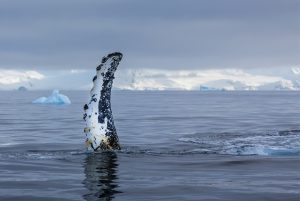Navigating the high seas
While individual nations seek to set aside a third of their own waters to meet the 30 by 30 goals, a team of international delegates, stakeholders, rights holders and scientists are looking further afield to the high seas. Two thirds of the ocean lies beyond national jurisdiction. The high seas take up about half the planet. Yet only one per cent of the high seas are protected, despite containing unique ecosystems that we are only just starting to discover. We know more about the surface of the moon than the depths of our ocean. “We don’t know much about the deep sea, the high seas, about most of life on earth. And yet we act as if: we don’t know about it, it can’t be important. If we don’t know, we can’t care,” said the legendary oceanographer, explorer, author and speaker Sylvia Earle gravely in one panel discussion on the high seas. “It’s really baffling to know that we don’t know and not be prepared to put our ignorance on the balance sheet as a precautionary principle.”
Another panelist, Sheena Talma, who has worked on deep-sea research in the Seychelles, spoke about how her own attitude towards the high seas has shifted. “Before having experienced it, before having rolled back the layers of our ocean and sea underneath, I was perhaps like most people: the high seas is outside my jurisdiction, there’s a lot of work to do here in my own country, etcetera.” She paused. “It is clear that we need more protection in these spaces.”
Most of the one per cent that is protected is within the Ross Sea MPA in Antarctica, where the icy ocean teems with life. The area is home to 40 per cent of the world’s Adélie penguins and 30 per cent of the world’s emperor penguins — and has a phytoplankton bloom every summer that can be seen from space. It took more than a decade, including five years of intensive diplomatic negotiations between 27 countries, for the MPA to come to fruition.
For the wider high seas, it’s almost another story entirely. “The core issue that has occurred is that there are several critical governance gaps on the high seas. At the moment we have a fragmented puzzle of organizations that manage different aspects of human activities in different areas on the high seas with varying degrees of success,” said Nicola Clark of the Pew Charitable Trusts, who follows the the UN negotiations for the treaty on marine biological diversity of areas beyond national jurisdiction (BBNJ). “And it’s in this messy, patchwork approach to the high seas governance that key things have slipped through the cracks: mainly that there’s no legal mechanism to establish high seas marine protected areas for most of the high seas. And there’s also no global obligation to conduct environmental impact assessments for these activities that are taking place there.”
On March 3, after five years of negotiations, and two decades of international diplomacy, the world’s governments finally agreed on the UN High Seas Treaty — a watershed moment for protecting biodiversity beyond national borders. The treaty is yet to be ratified by member states.
















